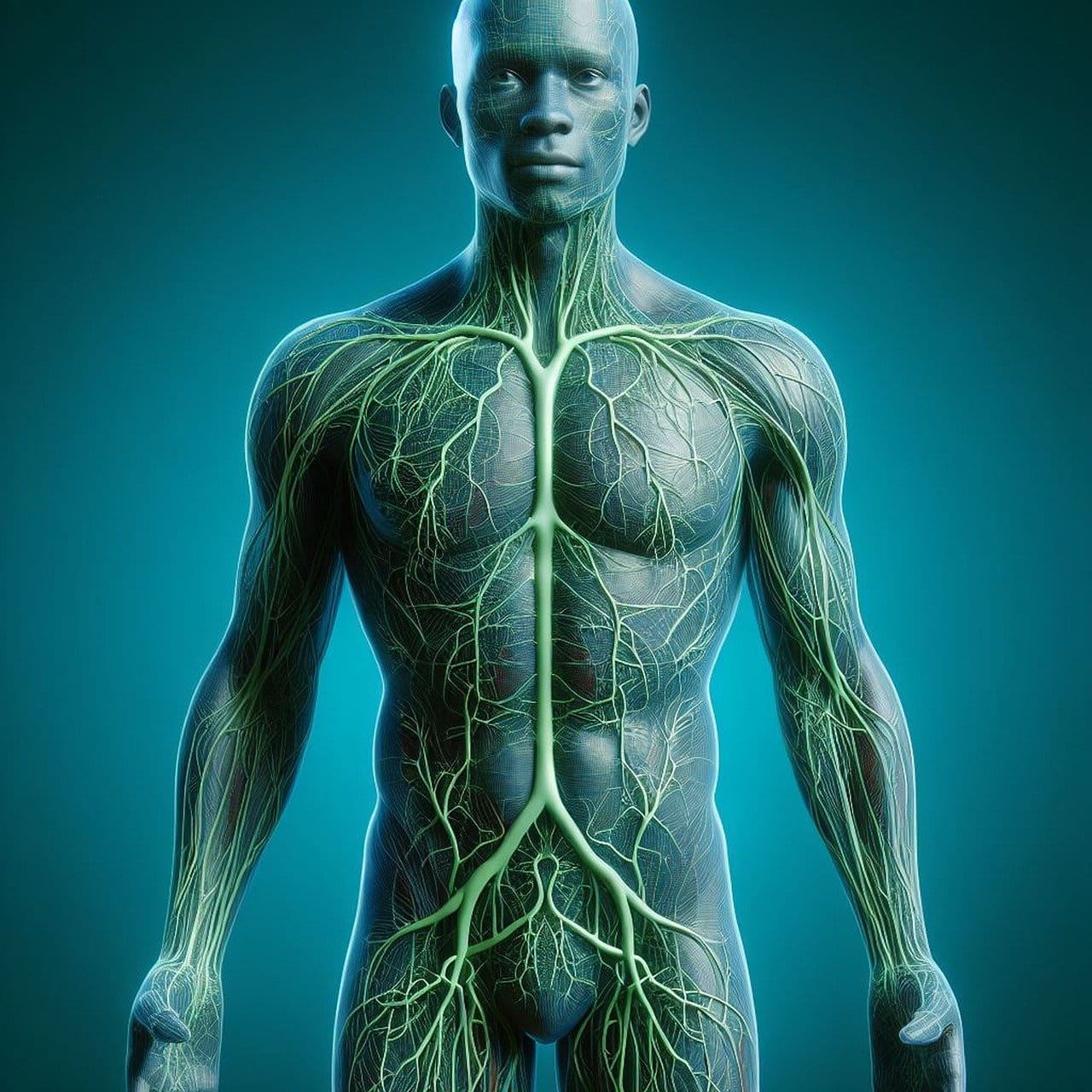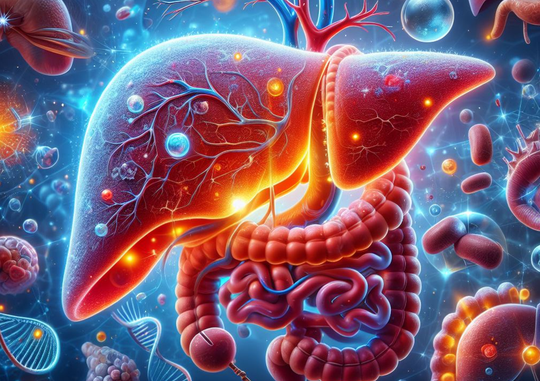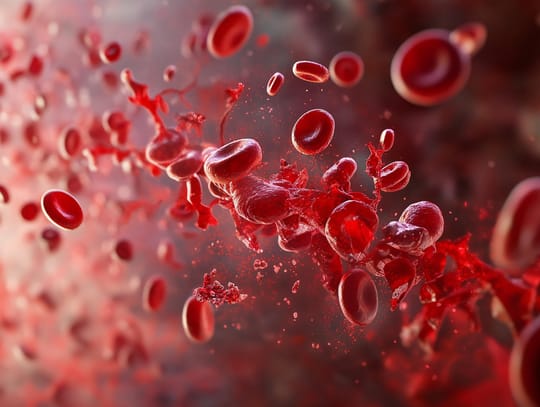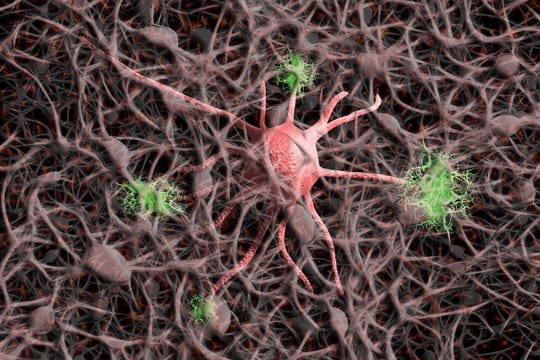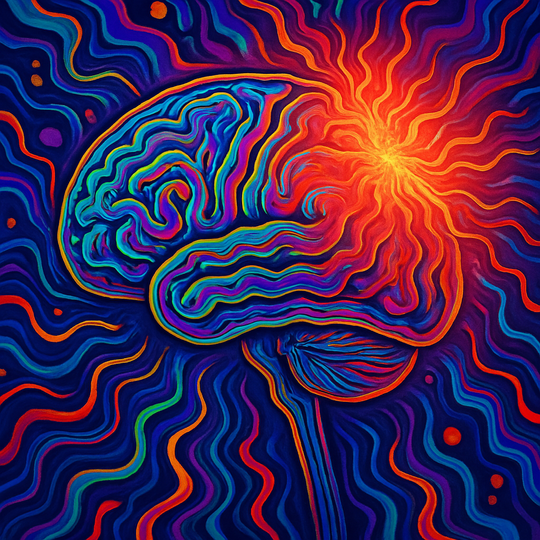In this blog post, I'll talk about the red light therapy lymphatic system effects. This topic is somewhat complex and there's not too much (high-quality) research available. I'll therefore piece the available research and tell you what still needs to be investigated on this topic.
Introduction: Why Your Lymphatic System Matters
The lymphatic system is unique because it participates in the circulatory, immune, and metabolic system (1; 2; 3; 4; 5; 6; 7; 8; 9). The system is made up of fluids, vessels, and cells (1). The three main roles of that lymphatic system are helping your body absorb dietary fats, fluid balance, and helping the immune system (1). A very recent review explains that process in the following way:
"The lymphatic vessels reabsorb interstitial fluid from the periphery to return it to the intravascular space, which prevents fluid build up in peripheral tissues. The lymphatics allow for the immune system to function properly as it carries antigens to lymph nodes, and also carries immune cells, such as macrophages to sites of infection to begin the immune process." (1).
The lymphatic system is connected to many of the body's systems, such as the gut (2). Inflammation levels throughout the body also interact with the lymphatic system and affect it.
Inflammation and the immune system have a very tight relationship, in fact (10; 11; 12). (Chronic) inflammation is an immune response, inherently, in fact. The lymphatic system helps immune cells travel to locations where they are needed - so locations where an inflammatory response is necessary. The lymphatic system is for that reason also closely intertwined with the circulatory system at the periphery of the body.
Lymphatic fluid moves throughout that lymphatic system and into the blood stream. Many organs and bodily systems also interact with the lymphatic system for eliminating waste products. The lymphatic system is extremely complex and if you're interested I recommend reading some of the good literature on the topic such as the reference I post next (6).
Unlike the circulatory system, the lymphatic system doesn't have a pump of its own. Therefore, the lymphatic system relies on mechanical pressure such as from massage or more frequently, from movement and exercise, to function well.
Now, as the lymphatic system plays a major role in detoxification, infections, inflammation, and more, it's easy to imagine why it's important. I'll explore how light therapy affects that lymphatic system next:
What Color Of Led Light Can Improve Lymphatic Flow? Light Therapy And The Lymphatic System
I've compared red versus blue light therapy in the past. Both have advantages for many different goals but red generally has a far better evidence profile right now. But, as you shall soon see, the dynamic around the lymphatic system and light therapy is more complex.
Below I'll explore all available studies on the (red) light therapy lymphatic system dynamic in detail:
- The lymphatic system also extends to the brain. And it turns out that red light therapy may affect the lymphatic system of the brain, the glymphatic system (13). Two mechanisms exist here. First, red light therapy is neuroprotective. And secondly, red light therapy likely helps with waste clearance in that lymphatic system. Animal research has been carried out showing that waste clearance effect. It even turns out that beta-amyloid, the plaque buildup that underlie Alzheimer's Disease, may be removed with red light therapy (13). Lymphatic vessels relax and the blood-brain barrier gets weaker temporarily, allowing that beta-amyloid to be cleared.
- Another study shows increased lymphatic drainage in the meningeal lymphatic vessels around the brain and spinal cord (14). Many different studies show this effect (15; 16). That's great news because it means you've got more lifestyle interventions next to diet and exercise which can lower your risk by almost 90% (17). What's interesting is that studies assume this light therapy may be used at night, when the body's glymphatic system is most active (18).
- Animal studies also show this intervention may be effective after a brain hemmorhage (19). We do need high-quality human studies to confirm these effects.
- Overall, although indirectly, red light therapy likely has a huge effect on the overall lymphatic system across the body by affecting chronic inflammation levels (20; 21; 22; 23; 24). World renown expert in "photobiomodulation" or red light therapy thinks that lowering inflammation is one of the main mechanisms by which it has an overall health effect. As a result of lower inflammation, energy-production is increased in the body. In studies across the board, both animal and human, inflammation goes down (20; 21; 22; 23; 24).
- Theoretically, you should also get a far better functioning lymphatic system when less chronic inflammation is present. It's not inflammation that's bad per se, but chronic inflammation. It's abundantly clear that chronic inflammation makes the lymphatic system work less well, for instance (25; 26; 27; 28). As always, high-quality studies are necessary to confirm these implications but they are reasonable speculation.
- Red light therapy may have an overall repair effect, in the circulatory system and lymphatic system in the same way it does in your skin (30).
- Not just red light therapy has an effect on the lymphatic system. Some studies show that a normal sensible dose of ultraviolet light also improves lymphatic circulation (29). Your overall immune system will also work more effectively with ultraviolet light exposure. The aim here is to get sunlight exposure directly on your skin and into your eyes, without sunscreen or sunglasses. But, you'll have to get out of the sun long before you get a sunburn.
That's my view on the red light therapy lymphatic system interaction in general, with some caveats such as ultraviolet light.
The Impact Of Red Light Therapy On Lymphedema
Lymphedema is a chronic disease that can arise because of different reasons (31; 32; 33; 34; 35). The basic underlying manifestation of lymphedema is the buildup of fluid in the lymphatic system because the system no longer functions appropriately.
The result of lymphedema is far more pressure in the lymphatic system. That pressure - because of fluid buildup not only means that the fluid is "stuck in traffic" so to say but also leads to movement, circulation, and skin problems.
The buildup of fluid can happen anywhere across the lymphatic system. That lymphatic system is found in the following places:
"The superficial system drains the skin and subcutis areas. The deep system drains muscles, joints, tendon sheaths, and nerves. Both systems are connected via the perforating vessels, which conduct lymph fluid from the subfascial areas to the surface." (31).
And as the lymphatic system interacts with the circulatory system, the latter system is also affected. As a result, risk of heart and blood vessel disease increases. The same is true for intestinal function.
Exercise therapy, compression garments, and lymph node massage are some of the most common therapies to counter lymphedema. But what about LED light therapy lymphatic drainage or red light therapy for lymphedema? Currently, there's little evidence that red light therapy for swollen lymph nodes works directly.
Indirectly though, such as through the mechanisms I explained before red light therapy may help a lot, such as improving the removal of toxins and lowering chronic inflammation.
But there are also a few studies on red light therapy for lymphedema, and specifically the latter's side effects:
- Cancer and cancer treatments is one of the most common reasons people develop lymphedema. Red light therapy may help in this case to counter side effects (36). Lymphedema decreased, which is great. And, the head and neck range of motion improved - which was where the cancer was located. Overall symptom burden also improved.
- In women with breast cancer, red light therapy reduced pain by 50% (37). Grip strength increased and quality of life improved. Only a small area of the body was treated (so I think people would get far better results with full-body treatments. A very low dose of light was used, at 5 Joules per centimeter-squared. A review on this topic is less positive but still observes reductions in circumference of the lymphedema (the ).
- One more study in head and neck lymphedema also has astonishing results (38). The lymphedema went down, as well as the tightness the lymphedema creates around the skin. And for the joints such as the neck, the range of motion increased so that people were better able to move. Also, common side effects such as having little saliva and problems swallowing food saw improvements.
- A review study from a few years ago found that there's good evidence for red light therapy for lymphedema (39). There is "strong evidence" for a reduction in swelling and circumference. Pain relief also has decent evidence. Please keep in mind that this 2017 review doesn't take the recent studies I quoted into account.
Overall this outcome is extremely promising. I do recommend a conservative treatment though, so start low with the dosing.
So you'll always need to talk with your physician about 1) whether you're sure cancer hasn't spread or won't spread throughout the body in the future; 2) you'll have to get the green light from your physician about whether to use red light therapy.
I'm not willing to take that risk because someone might be hurt and get a poor outcome with their cancer if I recommend red light therapy. So my recommendations only go out for people with lymphedema or lymphatic system issues without cancer.
Other Ways To Support The Lymphatic System
Exercise, compression garments, and intermitting compression therapy are other ways to support the lymphatic system.
And here, while speculative, you can probably do a lot to indirectly affect how well your lymphatic system performs. For instance, moving throughout the day arguably helps support the lymphatic system big time, and that's an area where many people don't do too well in right now.
Other lifestyle interventions, such as prioritizing sleep or eating a clean diet with whole foods, arguably will do very well. The reason here is simple: all of these reduce chronic inflammation, which should help the lymphatic system work much more effectively overall.
So I never recommend just focusing on red light therapy for lymphedema or the lymphatic system alone. I always recommend a full spectrum appraoch of lifestyle interventions, such as fixing your breathing, ensuring you sleep well at night, getting sunlight exposure, moving well.
And, if these simple lifestyle interventions don't help you with your lymphatic system, they will at least massively reduce the risk you have in other areas of your health, such as heart and blood vessel health (which is also related to your lymphatic system!), or your detoxification pathways (which are related to your lymphatic system), or your gut function (which, again, is related to your lymphatic system).
Also, I'm no expert in helping patients with lymphedema or lymphatic system issues, although I've seen patients as a physical therapist about this topic in the past. For the best results, consult a person who spends many hours per week with people who have lymphatic system issues!
Conclusion: The Science Is Promising!
Preliminary evidence shows that red light therapy for the lymphatic system works, but much more research is needed.
Whether you need red light therapy for lipedema or red light therapy for swollen feet, the coming years and decades will probably provide new evidence for the best wavelengths, power output, treatment protocols, and so forth.
For now, using a common sense approach with red light therapy dosing is probably the best way to go, with different wavelengths and light for general health support. Current evidence, however, for inflammation and other causes of poor lymph system function are affected big time by red light therapy.
This is a post by Bart Wolbers. Bart finished degrees in Physical Therapy (B), Philosophy (BA and MA), Philosophy of Science and Technology (MS - with distinction), and Clinical Health Science (MS), has had training in functional medicine, and is currently chief science writer at Lighttherapyinsiders.com
Found This Interesting? Then You Might Like:
- Start Here - Light Therapy 101 & Buyers Guide
- Discount Codes, Deals & Recommendations - Red Light Therapy
- What Is Red Light Therapy?
- Red Light Therapy Wavelengths Benefits: The Ultimate Guide
- Best Red Light Therapy Panel 2024: EPIC Comparison
- 36 Powerful Red Light Therapy Benefits

